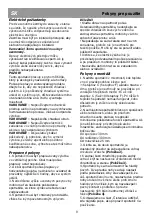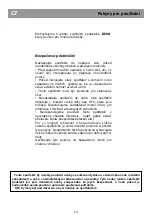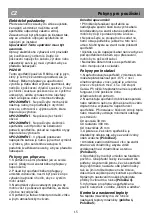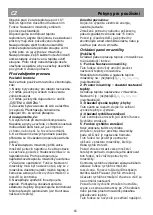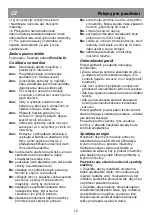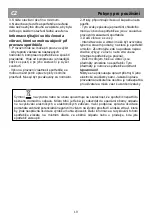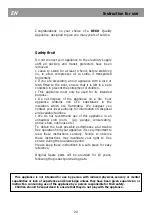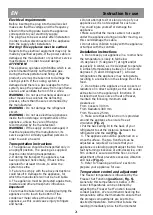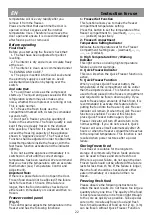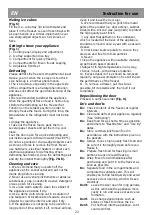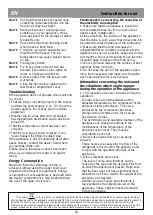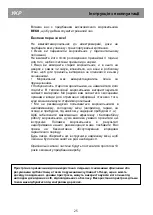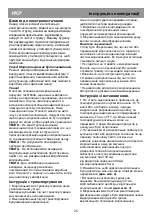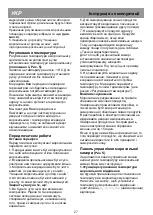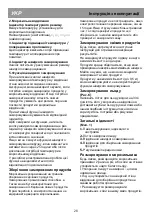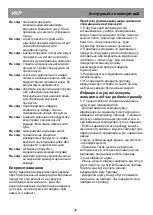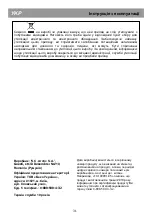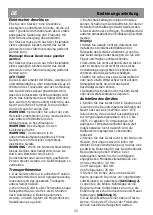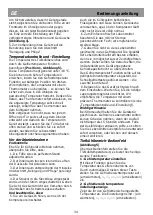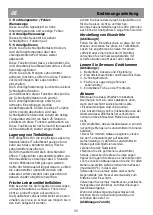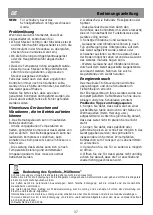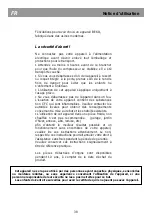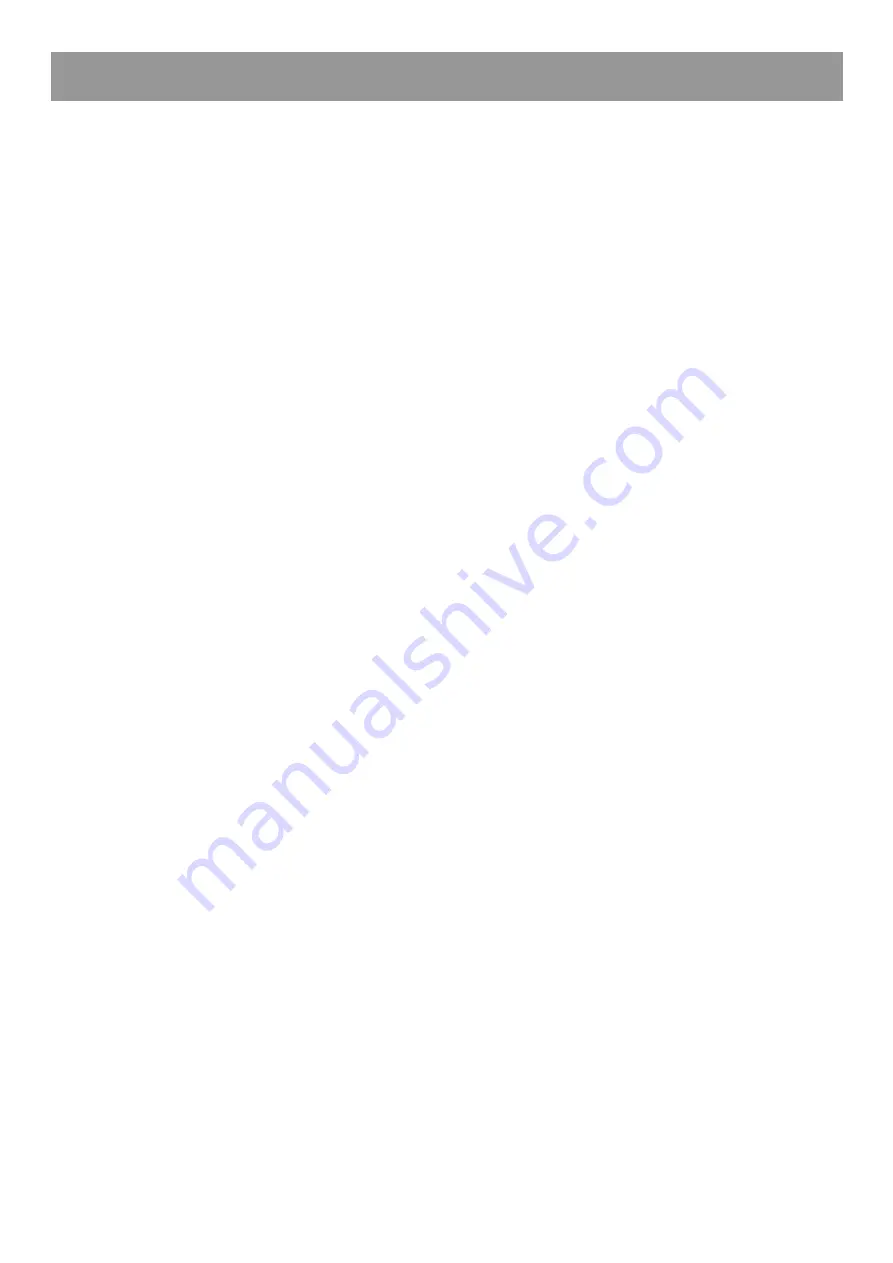
EN
Instruction for use
Making ice cubes
(Fig. 6)
Fill the ice - cube tray 3/4 full with water and
place it in the freezer. Loosen frozen trays with
a spoon handle or a similar implement; never
use sharp-edged objects such as knives or
forks.
Getting to know your appliance
(Fig. 1)
1 - Control panel, display and adjustment
2 - Ice tray support and ice tray
3 - Compartment for quickly freezing
4 - Compartments for frozen froods keeping
5 - Adjustable front feet
Defrosting
Please defrost the freezer compartment at least
twice a year or when the ice layer is too thick.
• Ice build-up is a normal phenomenon.
• The ice build-up, especially in the upper side
of the compartment is a natural phenomenon
and does not affect the good functionning of the
appliance.
• It is recommended to defrost the appliance
when the quantity of frozen food is not too big.
• Before the defrosting set the Freezer Set
Function on the coldest position in order to
strongly freeze the foods. During this time, the
temperature in the refrigerator must not be too
low.
• Unplug the appliance
• Take out the frozen foods, pack them in
several paper sheets and put them in a cool
place.
• Let the door open for a quick defrosting and
put inside vessels with warm water (max.80°C).
Do not use pointed or sharp-edged objects such
as knives or forks to remove the frost. Never
use hairdryers, electrical heaters or other such
electrical appliances for defrosting. When
defrosting has finished, close the defrosting part
and dry the interior thoroughly
(Fig. 7 & 8).
Cleaning and care
1. We recommend that you switch off the
appliance at the socket outlet and pull out the
mains plug before cleaning.
2. Never use any sharp instruments or abrasive
substances, soap, household cleaner, detergent
or wax polish for cleaning.
3. Use luke warm water to clean the cabinet of
the appliance and wipe it dry.
4. Use a damp cloth wrung out in a solution of
one teaspoon of bicarbonate of soda to one pint
of water to clean the interior and wipe it dry.
5. If the appliance is not going to be used for a
long period of time, switch it off, remove all food,
clean it and leave the door ajar.
6. We recommend that you polish the metal
parts of the product (i.e. door exterior, cabinet
sides) with a silicone wax (car polish) to protect
the high quality paint finish.
7. Any dust that gathers on the condenser,
which is located at the back of the appliance,
should be removed once a year with a vacuum
cleaner.
8. Check door seals regularly to ensure they
areclean and free from food particles.
9. Never:
• Clean the appliance with unsuitable material;
eg petroleum based products.
• Subject it to high temperatures in any way,
• Scour, rub etc., with abrasive material.
10. Excess deposit of ice should be removed
regularly. Large accumulation of ice will impair
the performance of the freezer.
11. To remove a drawer, pull it as far as
possible, tilt it upwards and then pull it out
completely.
Repositioning the door
Proceed in numerical order
(Fig. 9).
Do’s and don’ts
Do-
Check contents of the freezer at regular
intervals.
Do-
Clean and defrost your appliance regularly
(See "Defrosting")
Do-
Keep food for as short a time as possible
and adhere to "Best Before" and "Use By"
dates.
Do-
Store commercially frozen food in
accordance with the instructions given on
the packets.
Do-
Always choose high quality fresh food and
be sure it is thoroughly clean before you
freeze it.
Do-
Prepare fresh food for freezing in small
portions to ensure rapid freezing.
Do-
Wrap frozen food immediately after
purchasing and put it in to the freezer as
soon as possible.
Do-
Separate food in the compartments and
complete the contents card. This will
enable you to find food quickly and avoid
excessive door opening, which will save
electricity.
Don’t-
Leave the door open for long periods,
as this will make the appliance more
costly to run and cause excessive ice
formation.
Don’t-
Use sharp edged objects such as
knives or forks to remove the ice.
Don’t-
Put hot food into the appliance. Let it
cool down first.
23

